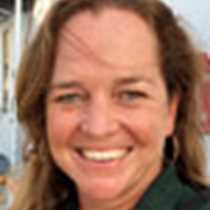Puerto Villamil and Sierra Negra Volcano; Southern Isabela Island
Caught between the towering heights and innumerable, bleak lava flows of Sierra Negra Volcano and the wildness of the Pacific Ocean, lies the sleepy little fishing village of Puerto Villamil. It is the main human settlement on the largest island in the Galápagos, Isabela, and counts approximately 1,600 inhabitants. Isabela is one of the most magical of the Galápagos Islands, being made up by the fusion of 6 large, still active shield volcanoes and bathed by the cool, nutrient-rich waters of the Cromwell Current. The seas have deposited white sands along much of the coastline, and one of the most spectacular beaches of all runs for about 3 miles in front of Puerto Villamil.
As a resident of the Galápagos, one of my very favourite routines is to escape the bustle of the largest settlement in the islands, Puerto Ayora on Santa Cruz Island, and take refuge in the calm, relaxed atmosphere that permeates Villamil, with its sandy streets, non-existent traffic and ramshackle but colourful buildings. The town is nestled in the skirts of Sierra Negra among the wetlands of the coast that home myriad shorebirds such as flamingos, stilts, pintails, moorhens. A leisurely stroll along the endless white beach brings us such sightings as sanderlings, sandpipers, plovers, whimbrels, willets, ghost crabs and such endemic marvels as the lava gulls and the marine iguanas. It really is little wonder that I could spend days on end here, and am particularly excited at now being able to share one of my very favourite spots with our Lindblad guests, on board the Islander.
We dropped anchor in the bay, and shortly after breakfast some hardy souls took picnic lunches and hiked up to the rim of the caldera of Sierra Negra, second largest in the world, then hiked on to the scene of the recent 1979 eruption of “Volcan Chico” – a scene reminiscent of Mordor with its stark beauty, countless gaping crater mouths and active fumaroles.
The rest of us visited the important captive breeding program that aims at restoring endangered populations of Isabela giant tortoises then walked through mangroves and wetlands till we reached the spectacular white beach where we could play in the surf, stroll along the sand or have a cold beer in a hammock slung between palms – what a life! We either stayed in town or returned to the ship for lunch, after which we continued exploring many of the sights of the area, by open-backed truck, by foot or by bicycle!
Before retuning aboard, we all gathered in a local restaurant to share our adventures and partake in a true local specialty: seafood ceviche and ice-cold local beer! Our interactions with the local “Isabeleña” community continued over cocktail and dinner, as some of the children of the local environmental education centre came aboard to join us and gave a charming presentation about their work towards the conservation of their beloved islands, Isabela in particular.
Caught between the towering heights and innumerable, bleak lava flows of Sierra Negra Volcano and the wildness of the Pacific Ocean, lies the sleepy little fishing village of Puerto Villamil. It is the main human settlement on the largest island in the Galápagos, Isabela, and counts approximately 1,600 inhabitants. Isabela is one of the most magical of the Galápagos Islands, being made up by the fusion of 6 large, still active shield volcanoes and bathed by the cool, nutrient-rich waters of the Cromwell Current. The seas have deposited white sands along much of the coastline, and one of the most spectacular beaches of all runs for about 3 miles in front of Puerto Villamil.
As a resident of the Galápagos, one of my very favourite routines is to escape the bustle of the largest settlement in the islands, Puerto Ayora on Santa Cruz Island, and take refuge in the calm, relaxed atmosphere that permeates Villamil, with its sandy streets, non-existent traffic and ramshackle but colourful buildings. The town is nestled in the skirts of Sierra Negra among the wetlands of the coast that home myriad shorebirds such as flamingos, stilts, pintails, moorhens. A leisurely stroll along the endless white beach brings us such sightings as sanderlings, sandpipers, plovers, whimbrels, willets, ghost crabs and such endemic marvels as the lava gulls and the marine iguanas. It really is little wonder that I could spend days on end here, and am particularly excited at now being able to share one of my very favourite spots with our Lindblad guests, on board the Islander.
We dropped anchor in the bay, and shortly after breakfast some hardy souls took picnic lunches and hiked up to the rim of the caldera of Sierra Negra, second largest in the world, then hiked on to the scene of the recent 1979 eruption of “Volcan Chico” – a scene reminiscent of Mordor with its stark beauty, countless gaping crater mouths and active fumaroles.
The rest of us visited the important captive breeding program that aims at restoring endangered populations of Isabela giant tortoises then walked through mangroves and wetlands till we reached the spectacular white beach where we could play in the surf, stroll along the sand or have a cold beer in a hammock slung between palms – what a life! We either stayed in town or returned to the ship for lunch, after which we continued exploring many of the sights of the area, by open-backed truck, by foot or by bicycle!
Before retuning aboard, we all gathered in a local restaurant to share our adventures and partake in a true local specialty: seafood ceviche and ice-cold local beer! Our interactions with the local “Isabeleña” community continued over cocktail and dinner, as some of the children of the local environmental education centre came aboard to join us and gave a charming presentation about their work towards the conservation of their beloved islands, Isabela in particular.




